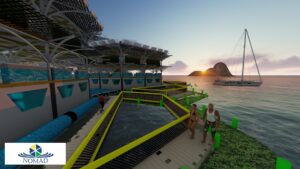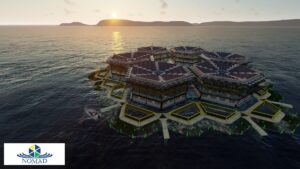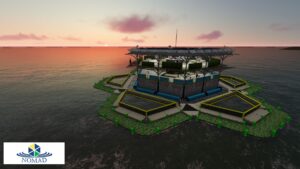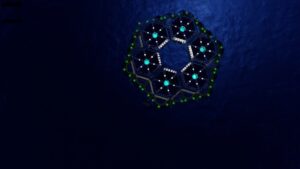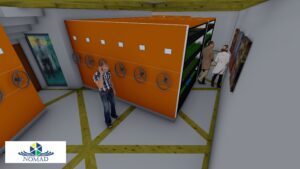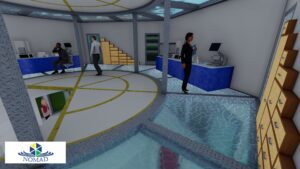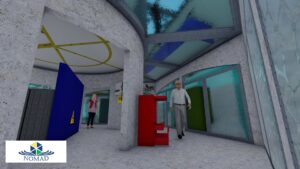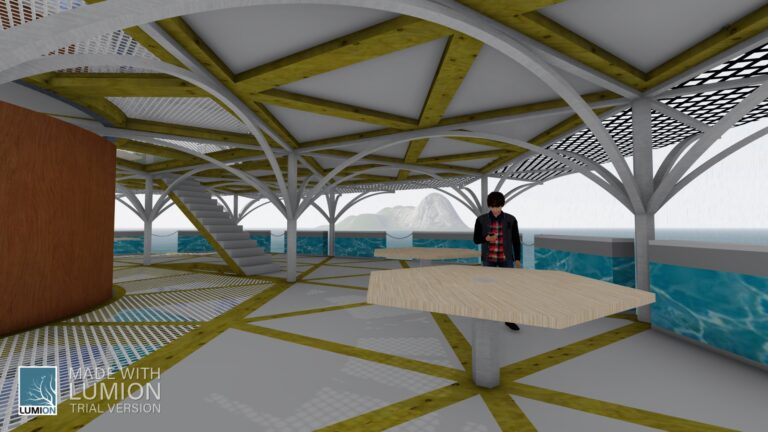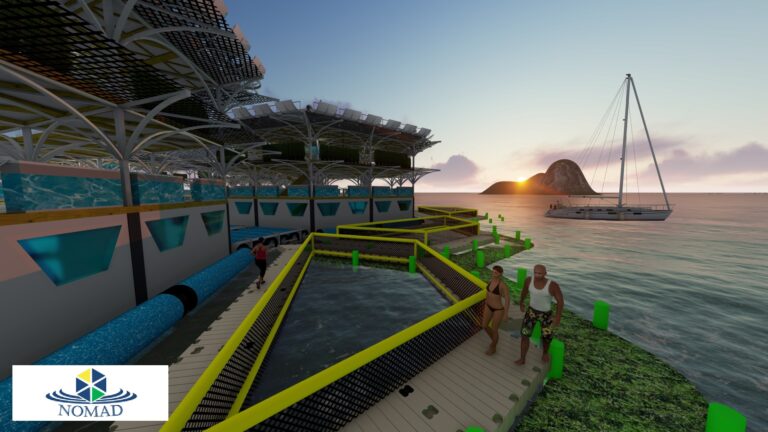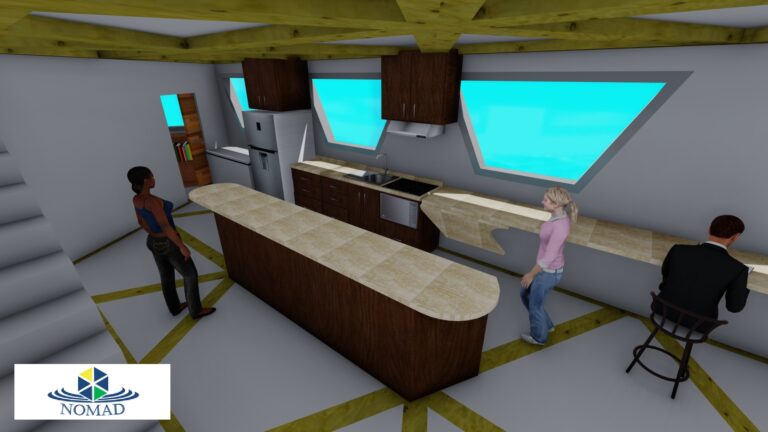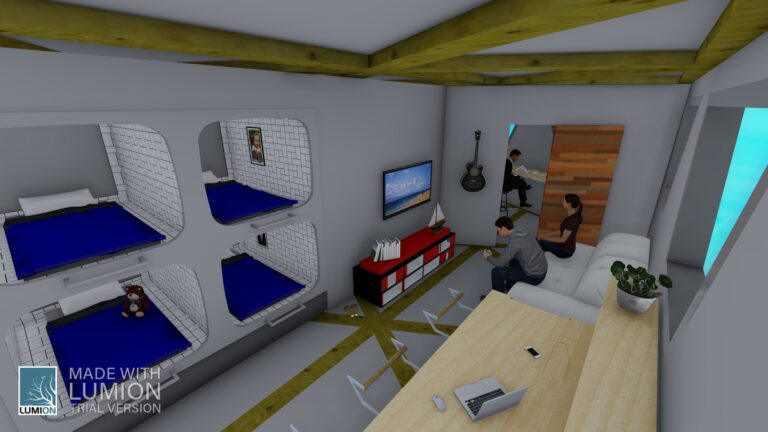The NOMAD Module
A single NOMAD module can house 12 residents and receive around 60-70 visitors daily. It can produce and immediately process 25 tons of food per month and store up to 280.000 liters of treated rainwater and desalinized seawater. Up to six modules can be joined to improve stability and productivity, thereby establishing a floating city of 72 residents, producing around 150 tons of food monthly, 5% of which is required for self-consumption.
As the NOMAD Network expands with new modules built worldwide, traveling opportunities for NOMAD associates (nomads) also expand via temporary transfers, where they may continue working uninterrupted, but in other stations, sharing culture, experiences, and solutions with collaborators from other countries, thereby combining the benefits of both cohousing and coworking.
Food production, Education and Tourism are the three pillars upon which NOMAD rests its resilient economic feasibility. The business model analysis for Costa Rica (where the prototype is to be located) suggests each pillar can stand on its own. Part of its operation also involves environmental monitoring as far as 20 km away.
Integrated Multi-Trophic Aquaculture
The FAO reports (include link, exclude this comment) 7,1 Gigatons of CO2 equivalent per year attributable to global livestock greenhouse gas emissions as follows: 60% by cattle, 9% by pork, and 8% by poultry. NOMAD aims to produce protein from fish, seaweed, and shellfish, through intensive methods that meet and capture more gas emissions by seaweed than those released by the marine livestock.
Furthermore, NOMAD offers an alternate source for protein, with much lower feed conversion ratios than that of cattle, pork, and poultry (7 kg/kg, 5 kg/kg, and 3 kg/kg, respectively). As it is a real carbon-negative endeavor, As fish-farming is the most efficient source for animal protein, with feed conversion ratios below 2 kg of feed per kg of product, it can also provoke pressing environmental impacts due to the release of organic waste into the environment, thus presenting higher operational costs, given that it requires more remote locations to run without polluting the littoral ecosystems.
Enter the integrated multi-trophic element, which cultivates several species simultaneously, so that passively fed seaweed and shellfish act as biofilters, allowing the settlement of aquaculture projects closer to shore. Because NOMAD considers all this, it can outproduce and outperform other conventional benchmarks.
Aside from the clear benefits of on-site micromanaged IMTA previously mentioned, NOMAD aims towards the restoration of the tropical coral reef because it is the base of marine ecosystem rehabilitation.
Continuous environmental monitoring is key to the project’s success, not least to ensure minimal negative impacts, but also to determine which issues require the most attention. Moreover, routinely deploying several coral farming missions will also help revitalize the ocean floor and simultaneously advertise NOMAD’s advancement in the environmental
NOMAD’s directive is to achieve intelligent harmony with the environment and to obtain from it the resources necessary for subsistence and economic development while protecting and rehabilitating the surrounding ecosystems, which implies a rigorous monitoring and control mechanism for human activities that are within a predetermined range of action.
The NOMAD crew will be able to use hydroponic technology to grow a large number of plant-based products, including food and medicinal plants, with the great advantage of not having to worry about pests, pesticides, or theft.
With this possibility, the supply within the module can be virtually complete, thereby minimizing – or even eliminating – land operations dependency.
“It is essential to have living spaces capable of offering the comforts of urban life, without losing sight of good practices regarding the rational use of resources. However, the facilities will include a full kitchen, space-pod cabins, internet services, water, and electricity, among others.”
As cohousing and coworking become increasingly popular and as newer generations become more interested in using than in owning NOMAD incorporates such concepts to maximize its collaborators’ financial productivity, by reducing their costs, both in time and money.
NOMAD aspires to create “working communities” rather than simple employment: Daily standard objectives require 4-5 hours, after which the crew is encouraged and supported to become entrepreneurs, to eventually undertake other economic activities, related to education, tourism, or any telecommuting service, such as design, programming, research, content writing, etc..
